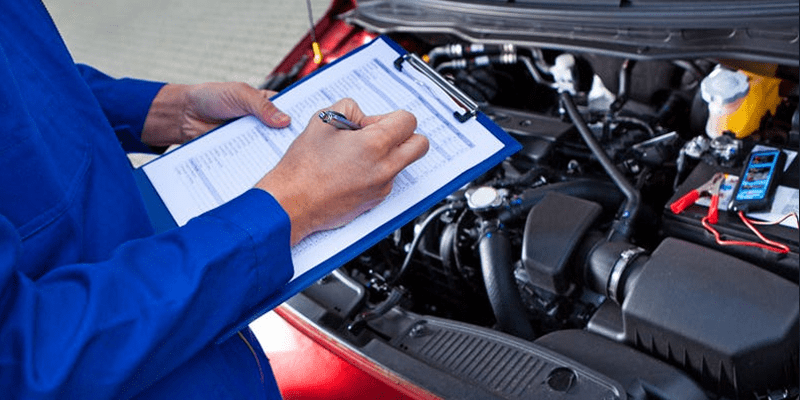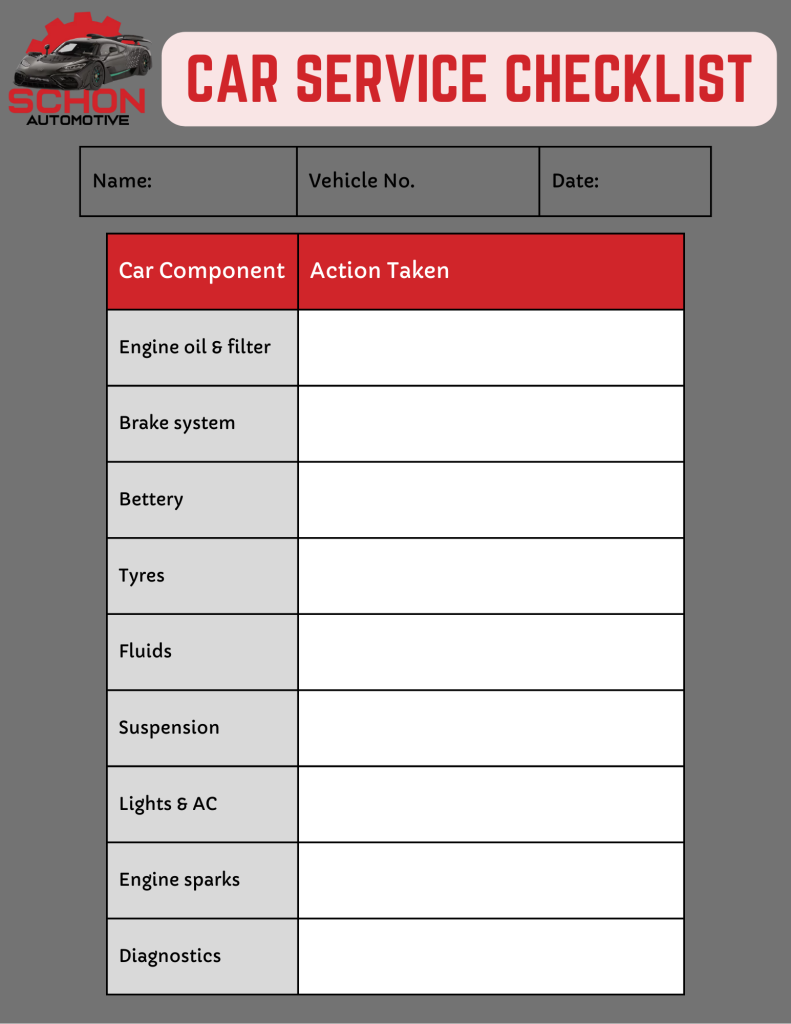A Mechanic’s Guide to Every Type of Car Service in Australia

Ever wondered what actually happens during a car service? And why is it so necessary for your car health?
Most Australians hand over their keys without fully understanding what they’re paying for. But when it comes to keeping your car in top shape. Knowing what’s included in a car service in Australia can help you a lot.
Regular servicing isn’t just about ticking a box. It’s about keeping your vehicle running safely and efficiently for as long as possible. This guide by Schon Automotive will explain each aspect of a car service. So, you can know what components are taken care of & drive away confidently.
Let’s start.
What Is a Vehicle Service?
A vehicle service is a routine inspection & maintenance of key car components. It is carried out to make sure that your vehicle is operating safely, efficiently, and reliably.
During a service, trained mechanics examine your car following a structured checklist. They assess everything from the engine and brakes to the tyres and battery. Replacing worn parts and topping up fluids as needed. Some services also include diagnostic scans of the car’s onboard computers to detect hidden issues.
There are different levels of servicing varying in depth but all aim to:
- Extend your vehicle’s lifespan
- Improve fuel efficiency
- Maintain your car’s resale value
- Keep you and others safe on the road
Let’s get toward them in detail.
How Many Types of Car Service Are There?
First, you need to know the difference between different types of car services. Here are the most common ones you’ll encounter in Australia.
1. Minor Service (Basic Car Maintenance)
A minor service, usually required every 10,000 to 15,000 kilometres or once every 6 to 12 months, focuses on the essentials.
What’s included:
- Engine oil and filter change
- Top-up of fluids (coolant, windscreen washer, power steering)
- Tyre pressure check and inspection
- Brake check
- Lights and battery inspection
- General safety and performance assessment
This type of service is designed to maintain your vehicle’s reliability and prevent wear over time.
2. Major Service (Comprehensive Check-Up)
Major servicing is more detailed and carried out every 30,000 to 45,000 kilometres. It involves deeper system checks and component replacements.
What’s included:
- Everything from a minor service
- Replacement of spark plugs
- Air filter and cabin filter change
- Brake fluid flush
- Full suspension and steering inspection
- Detailed electronic diagnostic scan
Major services provide a complete picture of your car’s condition and are needed to avoid future breakdowns.
3. Logbook Service (Manufacturer-Guided Servicing)
This type of service follows the exact maintenance schedule set by your car’s manufacturer. It’s important for newer vehicles to ensure warranties remain valid.
It:
- Uses manufacturer-recommended parts
- Follows kilometre-based service intervals
- Documents each service in the logbook
Following your logbook keeps your car covered under insurance and operates as it was intended.
What’s Included in a Car Service in Australia?
Many customers ask us “what is a car service what does it include?” And “why we should get whole service on a car instead of just checking the problematic parts?” So, let’s get it cleared once and for all.
1. Engine Oil and Filter Replacement
Oil keeps the engine cool and lubricated, reducing wear and preventing overheating. A fresh filter removes contaminants that can damage engine components.
- Promotes better fuel efficiency
- Reduces internal engine friction
- Essential for engine longevity
Skipping oil changes can lead to costly damage over time, so this step is non-negotiable.
2. Fluid Checks and Top-Ups
Modern vehicles rely on a variety of fluids to run smoothly. During a service, these are checked and refilled as needed:
- Brake fluid
- Coolant
- Transmission fluid
- Power steering fluid
- Washer fluid
Maintaining proper fluid levels is crucial for both performance and safety.
3. Brake System Inspection
Your brakes are your most important safety system. A proper service includes:
- Checking brake pads and discs for wear
- Inspecting brake lines for leaks
- Checking brake fluid is at the correct level and clean
If your brakes are squeaking or feel spongy, a service is the time to catch this issue early.
4. Suspension and Steering System Evaluation
A smooth and stable ride depends on the health of your suspension and steering systems.
- Technicians inspect shocks, struts, and ball joints
- Steering components are checked for play or looseness
- Misalignment or uneven tyre wear is also flagged
Issues in this area can lead to poor handling and increased tyre wear.
5. Tyre Health and Rotation
Proper tyre maintenance helps with fuel economy and safety. During a service:
- Tyre tread depth is measured
- Air pressure is checked and adjusted
- Tyres may be rotated to extend lifespan
Mechanics also look for punctures, uneven wear, or cracks.
6. Battery Condition Test
A weak battery can leave you stranded. Regular servicing includes:
- Voltage testing
- Checking for signs of corrosion
- Ensuring secure connections
Replacing a worn-out battery on time prevents unexpected breakdowns.
7. Lights and Indicator Checks
Lighting affects both visibility and road safety. A service involves:
- Testing all bulbs and indicators
- Adjusting headlight aim if needed
- Checking dashboard warning lights
Faulty lighting is a common reason for roadside fines and failed inspections.
8. Air Conditioning Function Check
Comfort matters, especially in warmer climates. Your A/C system is checked for:
- Cool air output and fan speed
- Filter cleanliness
- Refrigerant pressure
A healthy air con system also helps prevent cabin odours and allergens.
9. Engine Diagnostics and ECU Scan
Modern cars rely on electronic control units (ECUs) that manage multiple systems.
- A scan reveals stored fault codes
- Helps identify hidden issues before they become serious
- Assists in diagnosing performance or fuel problems
Even if your dashboard shows no warning lights, this scan can catch early signs of trouble.
Time Commitment for Each Type of Service
Type of Service | Typical Duration |
Minor Service | 1 to 2 hours |
Major Service | 2 to 4 hours |
Logbook Service | 2 to 3 hours |
If additional repairs are found, time can extend. But most garages will inform you before proceeding with any additional procedure.
How Frequently Should You Service Your Vehicle?
The right schedule depends on a few factors:
- Every 10,000–15,000 km or every 6–12 months is a general rule
- Manufacturer recommendations found in your logbook are gold
- Your driving habits: city traffic, dusty roads, or frequent towing mean more frequent servicing
Being proactive keeps repair bills lower and resale value higher.
Quick Car Servicing Checklist
Here’s a handy overview of what’s in a full service via a quick snap shot.
Searching for A Trusted Car Service Australia?
Take Control of Your Car’s Health with Schon Automotive
Now that you know what’s included in a car service in Australia. You can drive into your next appointment with confidence. Keeping up with regular services keep your car running smoothly. So, you can stay safe from any type of accidents.
Whether you’re cruising on the highway or stuck in traffic. A well-maintained vehicle gives you peace of mind every time you hit the road.
FAQs
Q1: How do I know when my car needs a service?
Look for service reminders on your dashboard, or keep track of the last service date and kilometres. Unusual noises or warning lights are also red flags.
Q2: Do I have to go to the dealer for logbook servicing?
No, any qualified mechanic can perform a logbook service as long as they follow the manufacturer’s requirements and use quality parts.
Q3: Is it okay to skip a car service if my car feels fine?
Not really. Problems can develop silently and skipping services leads to costlier repairs down the line.
Q4: What’s the difference between a minor and major service?
A minor service is basic maintenance like oil and filter changes. While a major service is more detailed, including spark plugs, fluid flushes, and diagnostics.
Q5: How much does a car service usually cost in Australia?
Expect to pay between $200–$400 for a minor service and $400–$900+ for a major service. Prices depend on your car’s make, model, and condition.
Q6: Can regular servicing improve fuel economy?
Absolutely. Clean filters, good oil, and proper tyre pressure all contribute to better fuel efficiency

